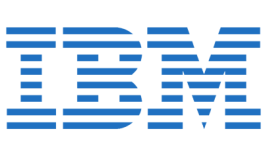Watson is a question answering computing system that IBM built to apply advanced natural language processing, information retrieval, knowledge representation, automated reasoning, and machine learning technologies to the field of open domain question answering.
The key difference between QA technology and document search is that document search takes a keyword query and returns a list of documents, ranked in order of relevance to the query (often based on popularity and page ranking), while QA technology takes a question expressed in natural language, seeks to understand it in much greater detail, and returns a precise answer to the question. According to IBM, “more than 100 different techniques are used to analyze natural language, identify sources, find and generate hypotheses, find and score evidence, and merge and rank hypotheses.”
The IBM Watson system gained fame by beating human contestants on the television quiz show Jeopardy! It was also a very public trial of an advanced form of computing: a cognitive system. A system that is not simply programmed but is trained to learn, based on interactions and outcomes. A system that rivals a human’s ability to answer questions posed in natural language with speed, accuracy and confidence. A system that brings man and machine together. By accurately extracting facts and quickly understanding relationships in large volumes of data, the technology can help accelerate and improve decision-making across industries and in society. Watson learns from additional information, questions and mistakes to improve accuracy over time.
While today’s programmable systems can apply volumes of data to a problem, they struggle when the data is unstructured, its accuracy is uncertain, or its velocity continually accelerates. The consequence, in the end, is that decisionmaking suffers. Watson’s cognitive capabilities were designed to take on the real- world challenges of Big Data in society and across a range of industries; from the outset, the aim was to put Watson to work, at first in healthcare and finance. Both industries confront “deluges” of unstructured data every day, and both industries have a compelling need to act on information quickly.
Healthcare
In 2011, To help improve the quality of care delivered, IBM announced a pilot program with WellPoint, whose affiliated health plans cover one in nine Americans. And in March 2012, IBM launched a partnership with Memorial Sloan-Kettering Cancer Center, where work is under way to teach Watson about oncology diagnosis and treatment options. In healthcare, Watson’s natural language, hypothesis generation, and evidence-based learning capabilities allow it to function as a clinical decision support system for use by medical professionals. To aid physicians in the treatment of their patients, once a physician has posed a query to the system describing symptoms and other related factors, Watson first parses the input to identify the most important pieces of information; then mines patient data to find facts relevant to the patient’s medical and hereditary history; then examines available data sources to form and test hypotheses; and finally provides a list of individualized, confidence-scored recommendations. The sources of data that Watson uses for analysis can include treatment guidelines, electronic medical record data, notes from physicians and nurses, research materials, clinical studies, journal articles, and patient information. Despite being developed and marketed as a “diagnosis and treatment advisor,” Watson has never been actually involved in the medical diagnosis process, only in assisting with identifying treatment options for patients who have already been diagnosed.
Combining its abilities to navigate the complexities of human language and to analyze massive amounts of data exceptionally quickly (over 200 million pages in 3 seconds on Jeopardy!), Watson has the potential to take advantage of new research studies, published reports and articles, as well as patient outcomes and interactions, to help physicians make evidence-based decisions. In banking Watson can pore over financial, regulatory, economic and social data across exchanges, currencies and funds at terrific speeds. For example, Citi has announced it will examine the use of Watson’s deep content analysis and evidence- based learning capabilities to advance customer interactions and to improve and simplify the experience of customers.
Vision for Watson
IBM Watson is the very embodiment of this new era of cognitive systems. It represents a new class of industry specific analytic solutions that leverages deep content analysis and evidence based reasoning to accelerate and improve decisions, reduce operational costs, and optimize outcomes. It accomplishes this based on a set of transformational technologies which leverage natural language, hypothesis generation, and evidence based learning. It combines these technologies and applies massive parallel probabilistic processing techniques to fundamentally change the way businesses look at quickly solving problems. But Watson is more than the sum of its parts; Watson is about bringing a unique combination of capabilities together in a way that’s never been done before resulting in a fundamental change in the way decisions are made. IBM’s vision is to define, create, and lead markets for this new class of cognitive system by:
- Addressing meaningful industry and societal challenges where conventional approaches don’t work;
- Developing a cognitive class of solutions built on a secure, scalable modular framework
- Delivering demonstrable, quantifiable value as defined by the client.
More around this topic...
© HPC Today 2024 - All rights reserved.
Thank you for reading HPC Today.






























